Why is change management important?
At its core, change management is crucial because it guides organizations through the uncertainty of change, ensuring that transitions lead to efficiency, innovation, and competitive advantage, rather than chaos and resistance.
It’s about getting people on board with new directions and smoothing the path to new ways of working. From crafting strategies to managing stakeholder engagement, this article will provide insight into the role change management plays in steering organizations towards successful transformation.
Key Takeaways
- Effective change management is crucial for modern businesses to ensure smooth organizational transitions, minimize disruptions, and navigate change successfully through a systematic approach involving planning, preparation, implementation, monitoring, and evaluation.
- Integrating change management with project management greatly increases the odds of achieving project success by addressing both the logistical and human aspects of change, ensuring the alignment of technical and human resources.
- A proactive change management strategy is key to fostering a flexible and innovative work environment, enabling quick adaptation to market trends, maintaining a competitive edge, and ensuring continuous business growth and employee engagement.
Navigating Through Organizational Change

In the fluctuating world of business, the competence to adapt to change can determine an organization’s success or failure.
A well-thought-out change management strategy ensures that organizational transitions are smooth and costs in terms of time and resources are minimized. The successful change management process involves several essential steps, such as:
- Planning
- Preparation
- Implementation
- Monitoring
- Evaluation
These stages form the bedrock of effective change management within an organization.
This systematic approach aids in comprehending the landscape of change and ascertaining the reasons behind changes, which are vital to unlocking potential benefits for the organization, its people, and processes.
Change management extends beyond merely implementing a new process or technology; it also encompasses managing people’s responses to these shifts. It’s about fostering conversations with individuals and teams affected by the change to reveal potential points of conflict and resistance that need to be managed.
Additionally, the use of change management tools such as software and apps can assist in the change process by providing resources for:
- training
- establishing knowledge bases
- tracking progress
- gathering feedback
Said another way:
Essentially, effective organizational change management readies the organization to take on the new ways of working.
By understanding the change landscape, acknowledging the role of change management in organizational success, and integrating project and change management, businesses can dramatically improve the benefits of change.
Understanding the Change Landscape
Organizational changes can vary from minor adjustments in processes to significant shifts in strategy.
Understanding the different types of changes – development, transitional, transformational, and remedial – is the first step in managing them effectively.
The initial step in preparing for organizational change is to define the change clearly and understand its significance. This involves not only internal factors but also external ones like changes in law or regulations, customer preferences, and technology advancements.
This is then followed by a readiness assessment to understand the gap of where the organisation is today versus where it needs to be in order to take on the change.
By understanding the change landscape, organizations can craft a change management initiative that is tailored to their unique needs and set the stage for successful change implementation.
The Role of Change Management in Organizational Success
Change management holds a central role in propelling organizational success. It’s about:
- Accomplishing desired goals
- Helping employees adapt to new processes and systems
- Guiding how to prepare, equip, and support them to adopt change
- Ensuring changes are adopted and welcomed by all employees at every level
- Ensuring that the change is beneficial to both the business and its employees
Key principles of change management include:
- Careful planning
- Inclusive leadership
- Clear communication
- Employee involvement
- Training and development
- A flexible and adaptive approach
- Continued monitoring and evaluation
Leaders trained in change management develop the skills to create successful change initiatives, guide their teams, and communicate benefits to stakeholders.
Ultimately, effective change management strategies are integral to the ongoing sustainability of an organization, minimizing internal resistance to change and increasing the chances of a transition being successful.
The Intersection of Project Management and Change Management
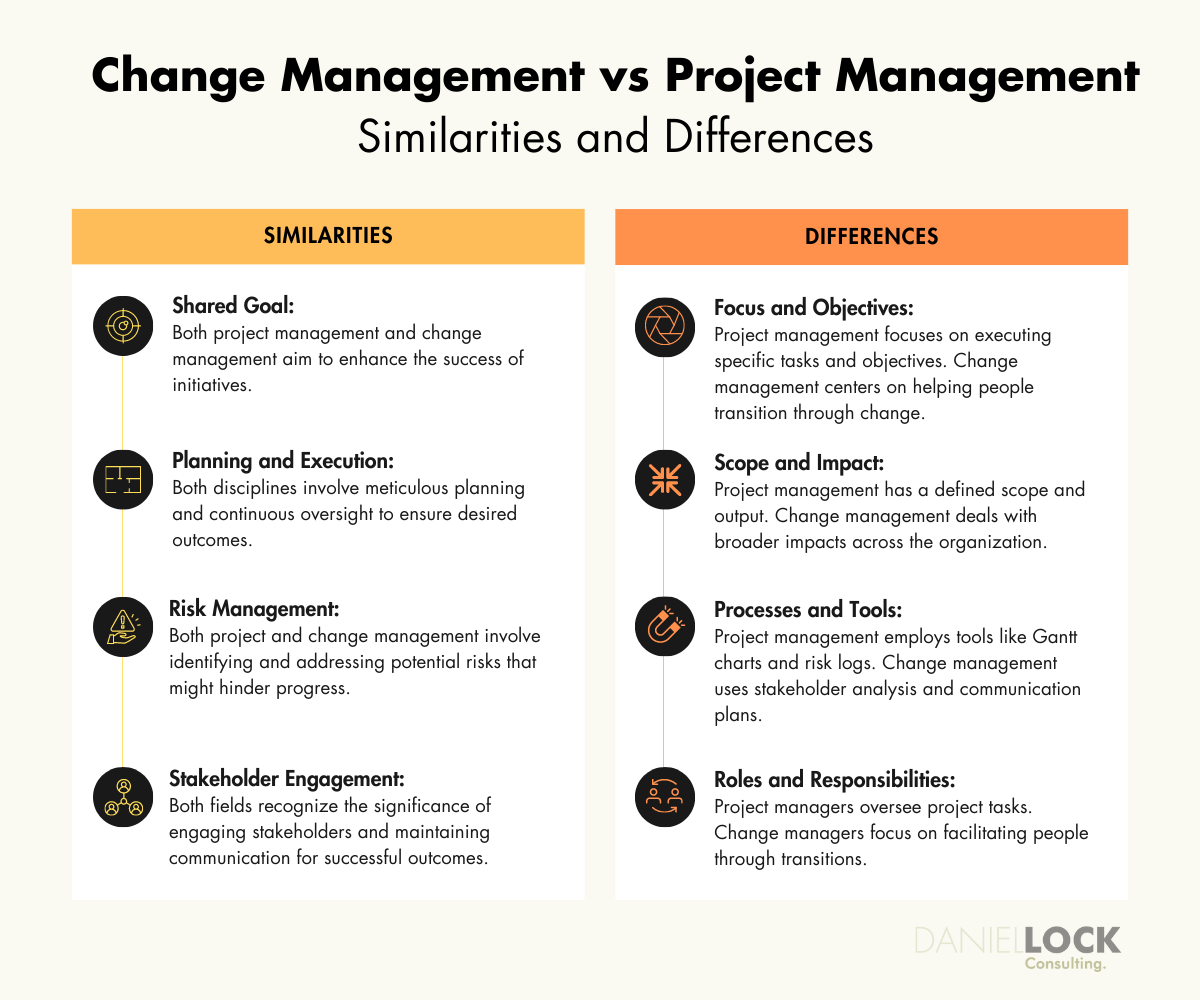
Change management and project management are two complementary facets of the same coin.
While project management focuses on organizing tasks and meeting specific objectives, change management supports the human aspects of implementation.
Integrating change management into project planning ensures that the human considerations of change are addressed, thereby increasing the probability of project success.
This effective integration is achieved by:
- Aligning goals
- Defining roles
- Structuring processes
- Improving communication
Ultimately, the alignment of the technical skills required for project management with the human elements addressed by change management ensures the successful delivery of project outcomes, with the guidance of a skilled project manager.
The Strategic Importance of Change Management
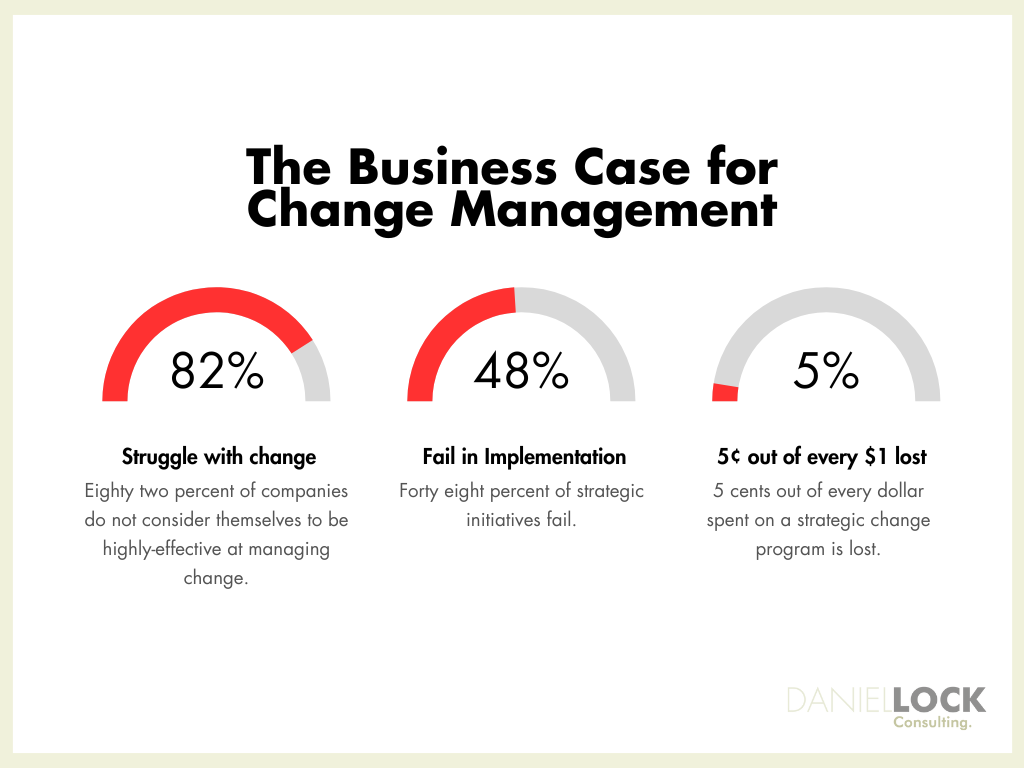
In the constantly changing realm of business, change management transcends being a mere necessity and becomes a strategic imperative. It enables organizations to:
- Align with strategic goals and maintain a competitive advantage
- Realize their strategic vision effectively and swiftly
- Foster a culture that is adaptable and resilient
- Foster a healthy, engaged workforce
- Enhance professional credibility
- Mitigate employee burnout
- Increase productivity
Well-implemented change management strategies can help businesses achieve these outcomes.
Change management is also crucial in adjusting to changing market conditions. The ability to anticipate market trends and adapt accordingly is a key factor in sustaining business success.
Finally, a robust change management plan pinpoints potential obstacles and facilitates the transition, thus solidifying its status as a strategic necessity. In essence, strategic change management helps businesses stay ahead of the curve, maintain their competitive edge, and sustain business growth.
Aligning Change with Business Objectives
Strategic alignment is key to the success of any change initiative. Changes in organizations are pursued to realize important goals, gain competitive advantages or adapt to new market opportunities and threats, and should align with business objectives to ensure success.
Understanding and communicating how the proposed change aligns to core business goals is a crucial first step in engaging the broader employee based in the “why” of the change.
Articulating anf making he connection to the organisations strategy does the following:
- Ensuring flexibility
- Setting SMART goals
- Obtaining stakeholder buy-in
- Maintaining open communication
- Developing clear and achievable plans
- Project management software for efficient tracking.
Ultimately, promoting open dialogue and collaborative decision-making is essential in change management as it leads to more informed decisions and enhances the likelihood of achieving favorable outcomes that align with strategic business objectives.
Maintaining Competitive Advantage
Change management plays a significant role in maintaining a competitive advantage in the market by driving organizational adaptability and innovation, ensuring companies can stay ahead in competitive markets by leveraging change for continuous growth.
Sustaining Business Growth
For a business to grow and thrive, it must be willing to change and adapt. Change management facilitates a smooth transition to a desired future state, which is essential for sustaining business growth.
The return on investment in change initiatives varies depending on the specific process being optimized within the organization. Moreover, effectively managed change:
- Maximizes engagement
- Empowers individuals
- Minimizes resistance
- Fosters trust
These are keys to continuous growth.
Ingraining new practices within the company culture prevents regression to outdated habits, supporting the maintenance of achieved growth.
In essence, change management is a catalyst for growth, enabling organizations to adapt, evolve, and flourish in a dynamic business environment.
Enhancing Employee Engagement and Morale
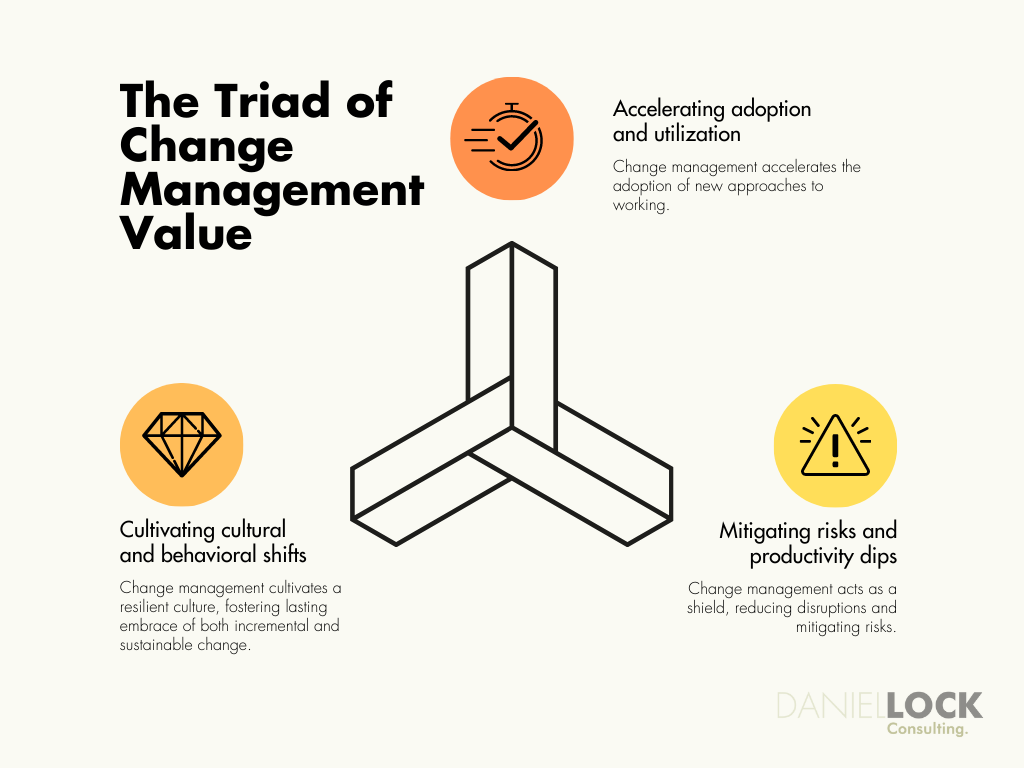
- Here are just a few benefits cited in a recent Gallup study:
– 81% lower absenteeism
– 64% fewer safety incidents
– 41% fewer quality defects
– 28% less shrinkage (theft)
– 23% higher profitability
– 18% more productivity
– 10% better customer loyalty
Change can induce stress among employees. Nonetheless, effective change management strategies can uphold high employee morale and ensure they are well-informed throughout organizational transitions.
Engaging employees in the change process, recognizing their achievements, and celebrating milestones reinforces employee engagement and builds morale.
High employee morale contributes to increased productivity, while resistance hinders success, highlighting the need for managing change effectively to enhance employee satisfaction.
Employees who are empowered and receive necessary training during organizational change exhibit adaptability and resilience, aiding in smoother change implementation.
Moreover, creating an enjoyable and collaborative work environment increases employee motivation, satisfaction, and leads to greater innovation and productivity.
In a nutshell, enhancing employee engagement and morale is a critical aspect of change management, contributing to a positive work environment and the overall success of the organization.
Building Employee Buy-In
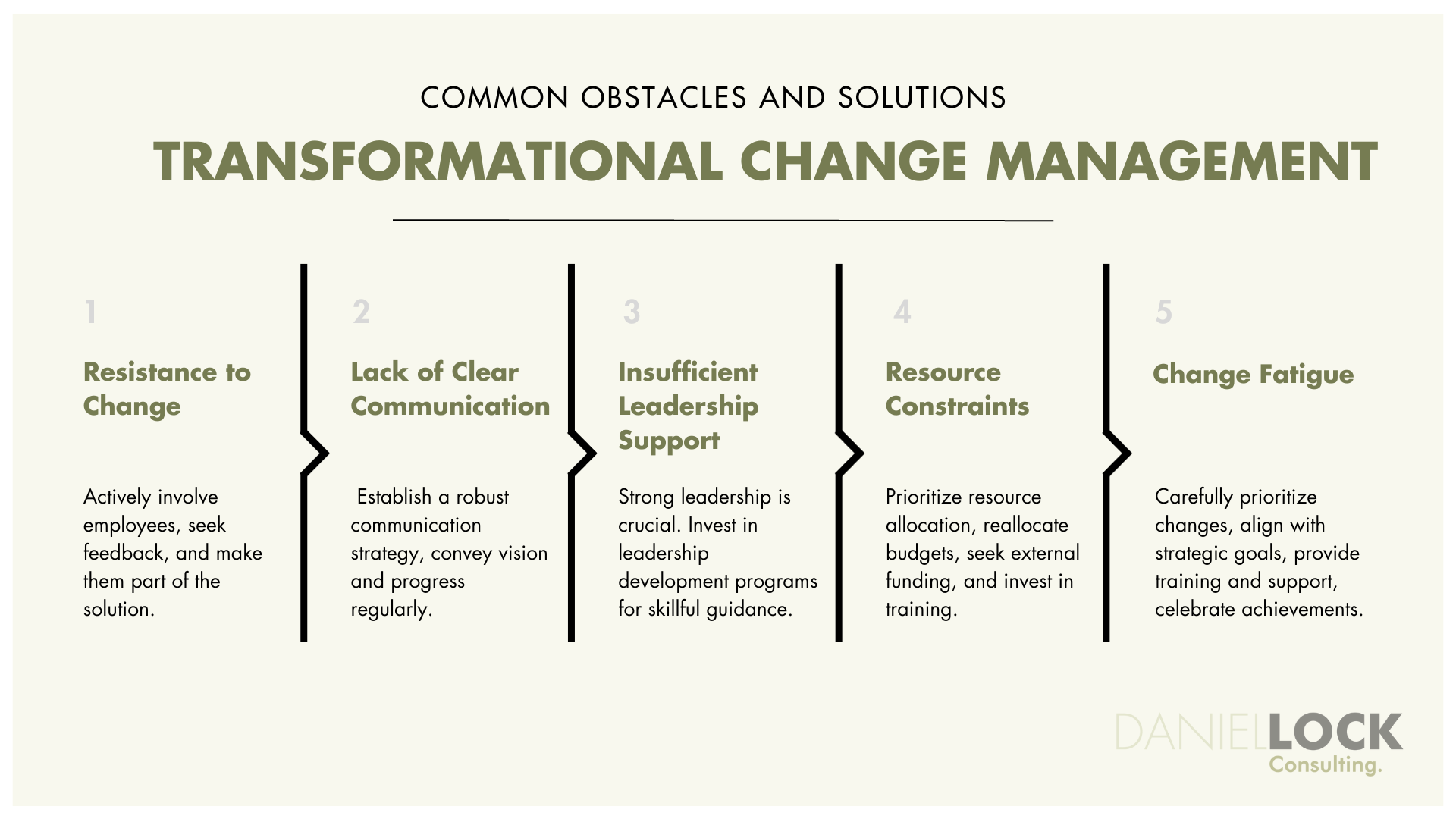
Building employee buy-in is crucial for the success of any change initiative.
A supportive and inclusive organizational culture where employees feel comfortable expressing concerns fosters unity and buy-in during change.
Transparent communication and structured planning build trust with employees, making them feel valued and more likely to engage with the change management process.
Employee accountability increases employees’ investment in the organization’s change strategy. Leaders who exemplify the desired behaviors and attitudes during change management encourage employee buy-in by demonstrating a commitment to the initiative.
In essence, building employee buy-in is about fostering a sense of ownership, trust, and unity among employees, setting the stage for a successful change initiative.
Training and Empowerment
Training and empowerment are key in managing change effectively. Change management equips each employee with the necessary skills and tools for successful transition, ensuring minimal disruption to operations.
Providing continuous change management training helps employees embrace long-term change, maintain motivation, and contribute to business innovation and productivity.
Moreover, empowering employees through autonomy and mentorship during change encourages ownership of the process, fostering a sense of personal investment in the change. In a nutshell, training and empowerment are essential elements of change management, equipping employees with the skills and confidence to navigate change effectively.
Communicating Effectively
Effective communication is the cornerstone of successful change management. Clear and consistent communication ensures that messages are understandable and builds trust among employees.
It reduces resistance to change by promoting employee buy-in and actively listening to employee concerns. Various communication tools enhance access to information and facilitate stakeholder feedback, especially for remote or diverse teams.
Leadership plays a pivotal role in communicating the vision and benefits of change. Some key strategies for effective communication include:
- Celebrating short-term wins to recognize employee efforts and sustain momentum
- Aligning communication with core values to ensure consistency and authenticity
- Respecting cultural diversity by tailoring messages to different groups’ customs and values
By following these strategies, leaders can ensure that their communication is effective and respectful.
Mitigating Risks and Smoothing Transitions
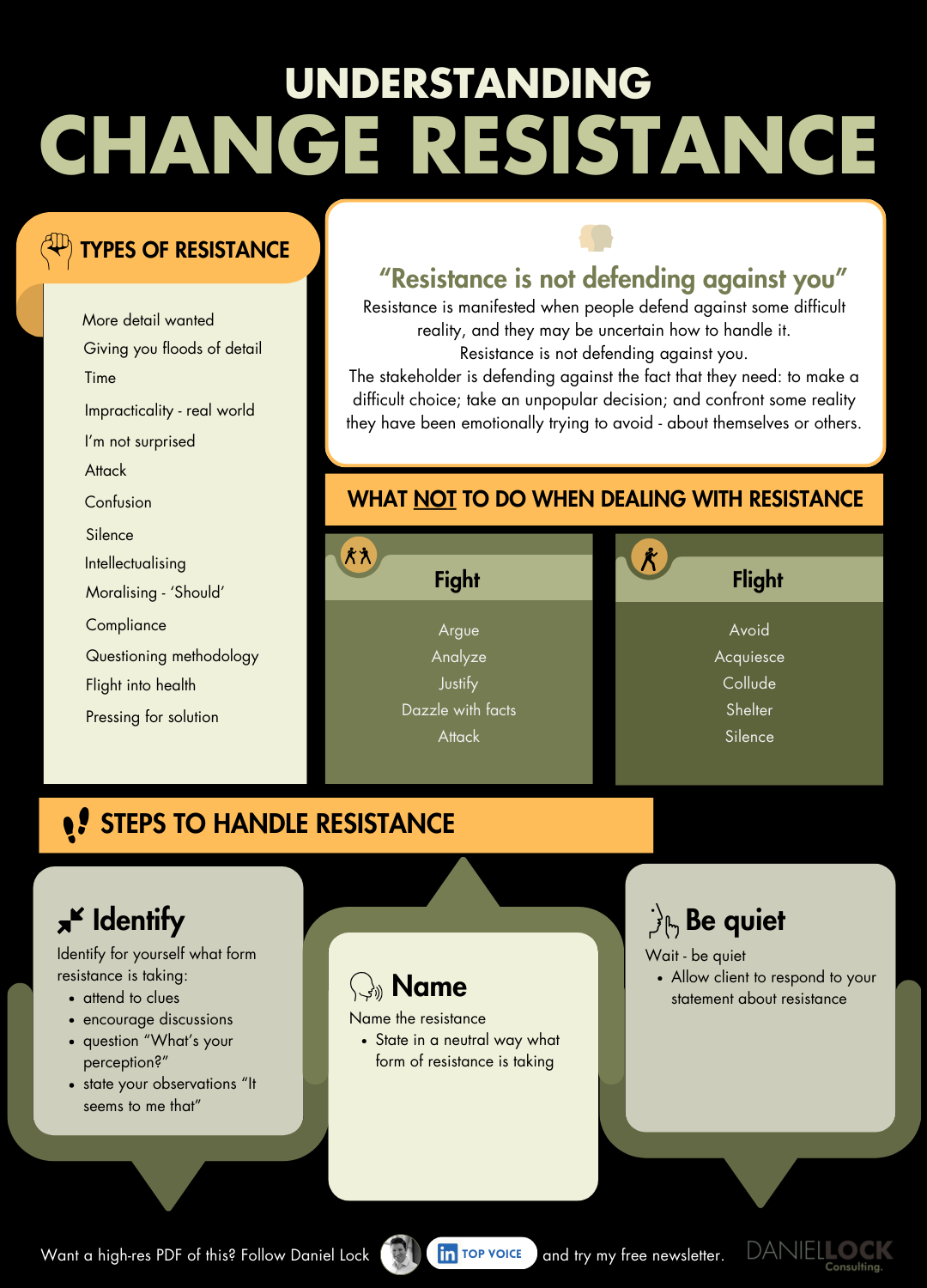
Change frequently brings along uncertainty and risk. Yet, effective change management strategies can alleviate these risks and streamline transitions.
Change management tools, such as The Buy-In Index, assist in tracking the progress of change initiatives, helping to pinpoint where adjustments may be necessary to stay on target.
The Buy-in index is a great tool to do this. Simple and useful, it is one of my favourite change management tools.
A short survey allows you to compare current attitudes and feelings compared to previous. It also provides comparisons between stakeholders, departments and teams within the organisation.
How
- Devise relevant and easy-to-understand questions/statements.
- Ask recipients to rate on a scale of 1 to 5, from (for example) strongly disagree to strongly agree.
- Deliver the survey in the most appropriate way. This may be online or via hard copy. If delivering online, a tool like Google Forms may be used.
- Survey at various times during the project lifecycle, using the same questions.
- The first survey should be after initial training but before implementation. This will help to identify activities needed to break down barriers to implementation.
- Mid-implementation. This highlights current risks and issues, allowing you to develop strategies to move the project forward.
- Post-implementation. This survey lets you identify risks and issues that have become apparent after implementation of a project.
Example statements that you could use in a Buy in index survey include:
- I understand the new operating model and my role within it.
- I believe that the new operating model will improve our performance.
- Senior management is committed to implementing the new operating model.
- I understand what I need to do to ensure the new operating model works effectively.
- I believe we have the capabilities and culture we need to implement the new operating model effectively/quickly.
- People in my area are fully committed to implementing the new operating model.
Moreover, feedback from employees is critical in change management. Tools like Google Forms can collect this feedback efficiently, informing risk mitigation strategies and facilitating smoother transitions.
Identifying and Addressing Potential Risks
Risk identification and management are integral parts of change management. Change management involves identifying, analyzing, and responding to risks with strategies such as risk avoidance, reduction, or contingency planning.
Conducting stakeholder analysis helps understand interests, concerns, and motivations, which is critical for assessing changes’ risks and benefits and for planning management strategies.
Engaging employees through two-way communication and feedback mechanisms is crucial for early identification and remediation of change-related issues.
Identifying and addressing potential risks in change management is about being proactive, prepared, and responsive to ensure the smooth execution of change initiatives.
Facilitating a Smooth Transition
Smooth transitions are key to the success of any change initiative. Anticipating organizational change and ensuring both logistical and cultural readiness prepares the company for a smoother transition and quicker adaptation.
Early engagement of project sponsors in the change management process is crucial for advocating the change and guiding the project, which supports a smooth transition.
Furthermore, timely mitigation actions and proper planning and resource allocation help maintain project timelines and deliverables, reducing the likelihood of delays or overruns.
Facilitating a smooth transition is about anticipation, preparation, and effective execution, enabling the organization to adapt to the new changes without major disruptions.
Monitoring Progress and Adapting Strategies
Change management is an ongoing process.
It requires continuous monitoring and adaptation to ensure its effectiveness. Key performance indicators, surveys, and comparative analysis are essential tools for measuring the impact of change and assessing the effectiveness of change management strategies.
Regular monitoring of project KPIs and adaptive actions based on analysis are crucial components of a structured approach to change management. Moreover, linking the performance of change management activities to meeting project objectives demonstrates the contribution of these activities to project success.
In a nutshell, monitoring progress and adapting strategies in change management is about being flexible, responsive, and committed to continuous improvement.
Change Management as a Catalyst for Innovation
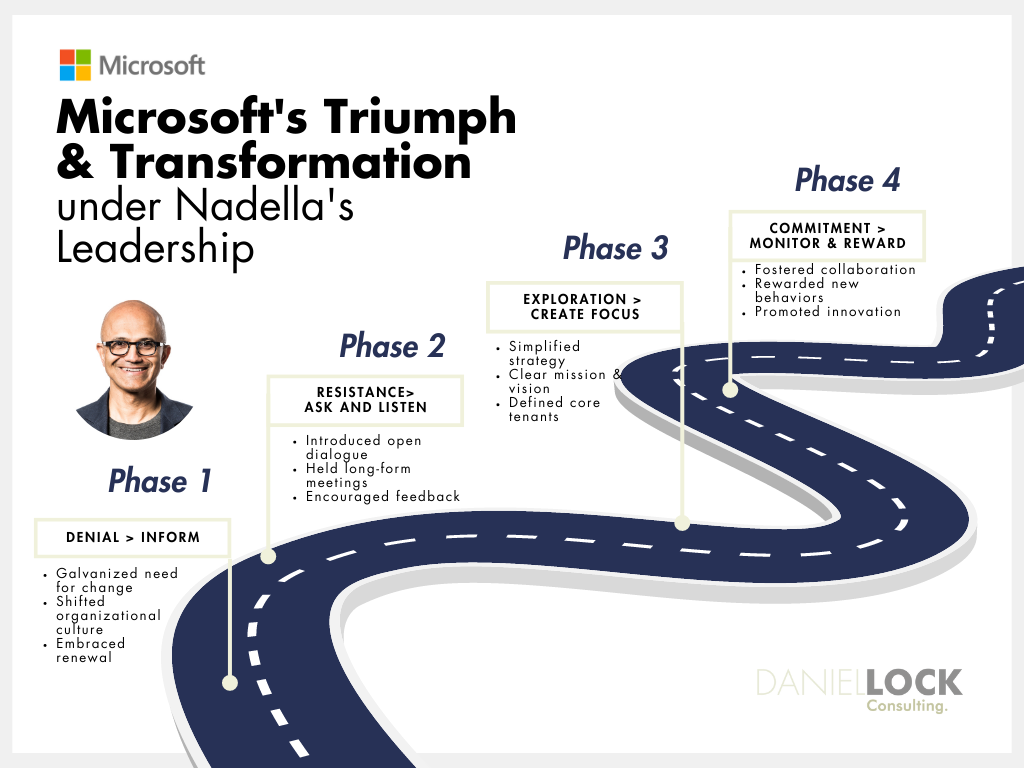
Innovation propels business growth. Change management can nurture a climate that supports and incentivizes innovation within a company, which is vital for sustaining a competitive advantage.
Whether it’s adopting a new business model, implementing a new technology, or simply tweaking a business process, change management provides the structure and support needed to bring these innovations to life.
Encouraging a Culture of Innovation
Creating a culture of innovation starts with management. By establishing an open and nonjudgmental environment where employees’ ideas are valued, organizations can foster a culture that promotes innovation.
A clear mission and vision for the company encourages a team-oriented approach towards innovation, giving employees a sense of direction and purpose.
Moreover, acknowledging both successes and failures constructively fosters a risk-taking attitude that is essential for driving innovation. In essence, encouraging a culture of innovation is about:
- Creating an environment that values ideas
- Taking risks
- Celebrating learning
- Setting the stage for continuous innovation and growth.
Responding Quickly to Market Changes
In today’s dynamic business environment, the ability to respond quickly to market changes is a competitive advantage. Building organizational agility and resilience via change management enables businesses to remain adaptable and responsive, which is essential for sustaining growth.
Organizations that engage in effective change management processes are better equipped to adapt their marketing strategies in order to meet changing customer needs and stay competitive in dynamic market conditions.
In essence, responding quickly to market changes is about being agile, adaptive, and resilient, enabling businesses to thrive in a rapidly evolving market.
Implementing New Technologies
Technological changes within organizations often involve introducing new software or systems to improve business processes. Change management plays a pivotal role in this process by assessing the organization’s readiness, addressing cultural barriers, and customizing approaches to fit the company’s unique environment.
By integrating new technologies effectively, organizations can improve their operations, enhance productivity, and maintain their competitive edge in the market.
Ensuring Effective Stakeholder Engagement
Stakeholder engagement is a pivotal component of change management. Whether it’s investors, suppliers, or prospective employees, stakeholders are critically impacted by how a company manages change, influencing their decisions to support or partner with the organization.
To ensure stakeholder alignment and commitment, it’s essential to communicate the scope of the change and detailed benefits through the change management plan.
Moreover, stakeholder feedback can be effectively collected using tools like SharePoint forms or polling apps in Microsoft Teams, informing risk mitigation strategies and facilitating smoother transitions.
Identifying Key Stakeholders
Identifying key stakeholders is a crucial first step in stakeholder engagement. Stakeholder analysis helps managers understand stakeholders’ interests, concerns, motivations, and potential impact on the change. Assessing the risks and benefits of change through stakeholder analysis, identifying potential conflicts, and planning for conflict management are part of ensuring an integrated change management strategy.
In essence, identifying key stakeholders is about understanding:
- who will be affected by the change
- how they will be affected
- enabling organizations to tailor their change management strategies to address stakeholders’ specific needs and concerns.
Allocating Resources Wisely
Resource allocation is a fundamental aspect of managing change effectively. Allocating the right resources, including tools, systems, and materials, is crucial for the success of a change initiative. Demonstrating a commitment to stakeholder engagement through resource allocation reflects positively on the success of the change initiative.
In essence, allocating resources wisely is about ensuring that the necessary tools and resources are in place to support the change initiative, contributing to its overall success.
Using Communication Channels Strategically
Effective communication is essential in stakeholder engagement. A change communication plan should be tailored with the following objectives:
- Align with business goals
- Clarify the desired behaviors for employees
- Provide key messages to explain the change
- Develop a strategy for how to communicate effectively
Using a variety of communication approaches and selecting the most effective channels for specific messages ensures that the communication reaches the widest possible audience and has the intended impact.
Above all, maintaining ongoing assessment of communication efforts and making adjustments based on stakeholder feedback and metrics ensures the effectiveness of the change management’s communication strategies.
Creating a Roadmap for Successful Change Management

Crafting a blueprint for successful change management includes several crucial stages.
A change management plan should start by defining the scope and specific details of what will change.
Assigning clear responsibility for each aspect of the change ensures accountability and clarity within the organization.
Creating a timeline for implementing changes, with deliverables and milestones, helps keep the change management process on track.
Lastly, setting a budget for the change is essential to ensure that adequate resources are available for implementation.
Establishing Clear Vision and Objectives
Formulating a clear vision and objectives is imperative for the success of a change initiative. A clear vision for change management saves time and streamlines processes by clarifying the general direction of the initiative. This involves:
- Outlining the reasons for the change
- Describing the expected benefits
- Setting targets that are specific, measurable, achievable, relevant, and time-bound (SMART goals)
Creating a vision requires teamwork and may involve several drafts to ensure that it aligns with and translates into strategy.
Developing a Structured Approach
Developing a structured approach is key to managing change effectively. Some popular change management models include:
- McKinsey 7-S Framework
- Kubler-Ross change curve
- Kotter’s 8-Step framework
Selecting the right change management model is pivotal to managing change effectively.
The structure of the change management process serves as a systematic and careful pathway from a business’s current state to its envisioned future.
Training and Support Systems
Training and support systems assume a pivotal role in successful change management.
Change management helps in identifying specific training needs for projects, enabling employees to smoothly adapt to new processes and systems.
Project management software enhances the creation, tracking, and monitoring of change management plans, including training schedules and support mechanisms.
By equipping employees with the necessary skills and providing the required support, businesses can ensure a smooth transition to the new changes.
Summary
In conclusion, effective change management is a strategic imperative for modern businesses.
It enables organizations to navigate the complexities of change, align with their strategic goals, maintain a competitive edge, and foster a culture of innovation.
By enhancing employee engagement and morale, mitigating risks, and ensuring effective stakeholder engagement, businesses can ensure a smooth transition to the new changes.
Whether it’s adopting a new business model, implementing a new technology, or simply tweaking a business process, change management provides the structure and support needed to bring these changes to life.
So, are you ready to embrace change and propel your business to new heights?
Frequently Asked Questions
What is change management Why is it important?
Change management involves facilitating cultural changes in an organization to improve processes and meet market needs. It is important because it helps anticipate and address potential problems before they arise, ultimately improving the organization’s adaptability and success.
What are the 5 C’s of change management?
The 5 C’s of change management are: Communicate with clarity, be consistent, build confidence, show commitment, and demonstrate care and concern for people’s well-being. These are crucial principles in managing change effectively.
What is change in an organization?
Organizational change encompasses significant shifts that impact the entire organization, such as changes to personnel, company goals, service offerings, and operations. This can include alterations to the company’s culture, technology, infrastructure, or internal processes.
What are the key principles of effective change management?
Key principles of effective change management involve careful planning, clear communication, inclusive leadership, employee involvement, training and development, a flexible approach, and continuous monitoring.
These principles are crucial for successfully managing change in an organization.
How can change management help in maintaining a competitive advantage?
Change management can lead to cost savings, efficient production processes, adaptability, and innovation, all of which are crucial for maintaining a competitive advantage in the market.

